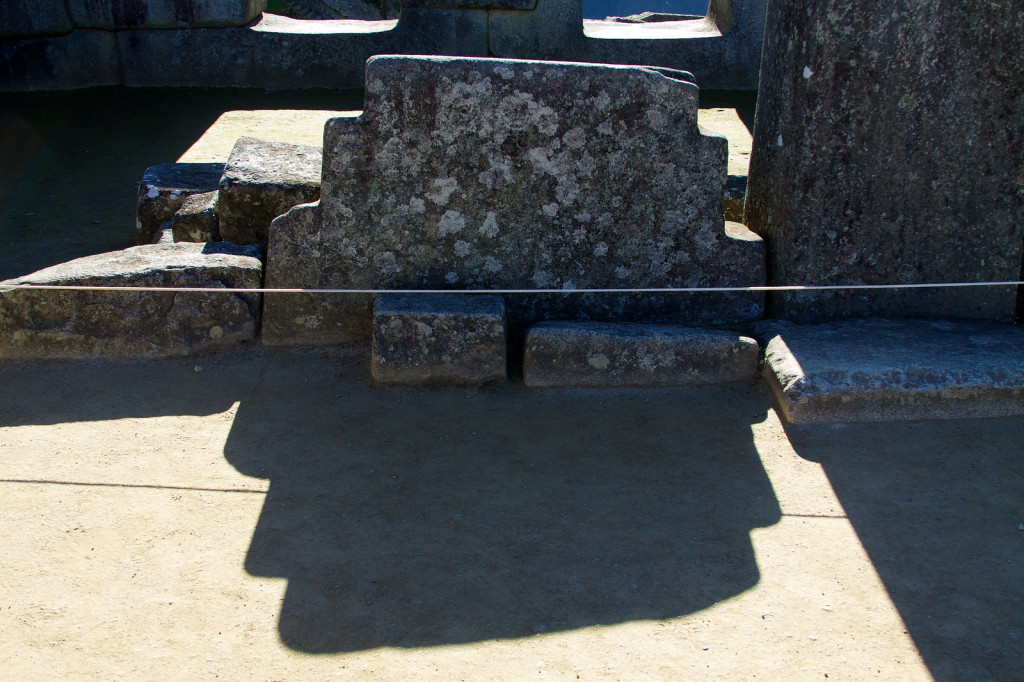
Step patterns are found throughout Incan architecture. Photo by McKay Savage licensed Creative Commons Attribution.
Step designs are found everywhere in important Inca ruins and are versions of the chacana, a sacred Andean symbol similar to the Christian crucifix. The chacana is the key to understanding the spiritual beliefs of the Inca, which are alive and well today in the syncretic Catholic belief systems of Peru’s Andean people. The chacana is based on the Southern Cross, a constellation revered by the Inca.The Andean Cross, or Cruz Andina, is a combination of two figures: an equal-armed cross that indicates the four corners of the Inca world (north, south, east, and west) and a superimposed square indicating the four elements of Inca cosmology (water, air, earth, and fire).
The three steps on each side of the chacana correspond to the three levels of the Inca universe. The bottom step is the underworld (uku pacha), associated with serpents, death, and the wisdom of ancestors. The middle step is the earth (kay pacha) and relates to everyday human life, pumas, and life energy. And the top level is the sky or heavens (hanan pacha), linked to condors, stars, virtuous beings, and gods.
You will see the chacana symbol displayed in art and jewelry everywhere in Cusco. You can see the chacana in different ruins in the Cusco area:
The famous walls of Ollantaytambo’s Temple of the Sun are decorated with faint step patterns of the chacana. At the foot of the temple, the Princess Baths are a sequence of fountains decorated with elaborate chacana symbols.
There is the top half of a chacana symbol in front of Pisac’s Intihuatana, the sacred stone pillar used to measure the sun’s movement. Above the chacana, sculpted out of rock, is another stone pillar that is easy to miss if you aren’t looking for it. During the June 21 winter solstice, the sun casts a shadow from this pillar that hits the chacana. The resulting shadow completes the bottom half of the chacana and marks the beginning of the harvest season.
Chacana step patterns are found throughout the ruins, most notably at the Funerary Rock, Intihuatana, and Royal Tomb.
These two ruins, near each other on the outskirts of Cusco, both feature prominent rock outcroppings carved with chacana steps. Below Sacsayhuamán is a cave with a chacana-shaped entrance.
Excerpted from the First Edition of Moon Cusco & Machu Picchu.